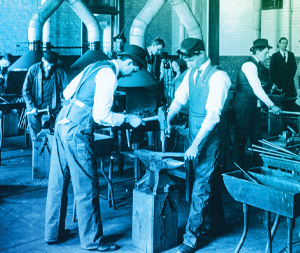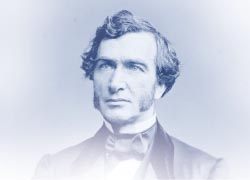

THE FOUNDING
Three days into the start of the new year in 1896, the Board of Trustees for the Pennsylvania State College gathered in Harrisburg for its regularly scheduled meeting. Among a series of agenda items that January afternoon, one in particular would reshape the institution.
Two years earlier, in his 1894 annual report, President George W. Atherton noted that successful and rapid expansion in technical areas such as engineering had absorbed an increasing share of the college’s resources, sometimes to the detriment of the liberal arts and other non-technical areas.
“If we cannot enlarge our work in all directions,” Atherton wrote, “I am clearly of the opinion that we should hold down our technical work at the present level.” To Atherton, this was wholly unappealing for an institution like Penn State; one that had finally found its financial footing in the 1890s and was beginning to grow in prominence.
In response, in September 1895, the executive committee of the board recommended the formation of distinct schools within the college. Doing so, it was argued, would increase cooperation and focus among related departments, diminish wasteful redundancies, and shift the role of administration away from the president’s office and onto newly appointed school deans. This was the path forward to allow both technical and non-technical education at Penn State to flourish with a new century just over the horizon.
During its meeting on Jan. 3, the board unanimously approved the executive committee recommendation from the previous fall and established seven schools at Penn State, one of which was the School of Engineering with its Departments of Civil, Electrical, and Mechanical Engineering.
Across the decades since that decision, engineering-driven advancements have reshaped the world and the Penn State School of Engineering — which in 1953 became the College of Engineering — has played a critical role. Today, the college is engaging around the globe to help solve humanity’s greatest challenges, working to build a more inclusive academic community and a more diverse engineering workforce, and partnering in new ways across campus and with government and industry.
In their words
“The question of today: ‘Where is the electrician? Where is the engineer?’ We must have them both, and we depend in Pennsylvania, to a large extent, upon this college to furnish them.”
Former Pennsylvania Governor and Board of Trustees Member General James A. Beaver at the dedication of the Main Engineering Building in 1893.

Did you know?
The Morrill Land Grant Act of 1862 created a path for the Farmers’ High School — as Penn State was known at its founding — to expand its curriculum beyond its agriculture roots. The act directed schools to teach, among other things, “such branches of learning as are related to agriculture and the mechanic arts.”


